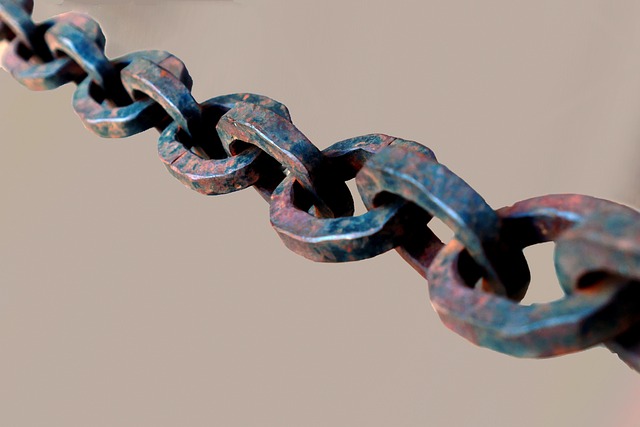Internal linking is a powerful SEO strategy that relies on understanding and optimizing link equity distribution. This involves designing navigation for key pages to receive maximum 'votes' of confidence, improving user experience and search engine rankings. Broken links should be identified and fixed promptly using tools, as they negatively impact both user experience and site authority. An audit using SEO tools can uncover low-value or outdated links, which should be replaced with relevant ones. Optimizing anchor text for internal links helps search engines understand content better, and structured navigation ensures equitable distribution of link equity across themed pages. Continuous monitoring and management using tools for diversity, strength, and domain authority are essential for peak website performance.
Struggling with internal linking issues? This guide is your roadmap to a robust site structure. We’ll help you unravel the complexities of link equity distribution, identifying broken links that hinder SEO performance. Learn effective strategies to evaluate and fix weak links, optimize anchor text for seamless equity transfer, and implement structured navigation for improved link flow. By mastering these techniques, you’ll boost your site’s visibility and search rankings through optimal link equity distribution.
- Understanding Link Equity Distribution: The Foundation of Internal Linking
- Identifying Broken Links and Their Impact on SEO
- Strategies to Evaluate and Fix Weak Internal Links
- Optimizing Anchor Text for Effective Link Equity Transfer
- Implementing Structured Navigation for Improved Link Flow
- Measuring and Monitoring Link Equity Distribution Post-Fixing
Understanding Link Equity Distribution: The Foundation of Internal Linking

Internal linking is a powerful SEO tool, but understanding its core concept—link equity distribution—is essential for effective implementation. Link equity refers to the value or ‘strength’ passed from one page to another through internal links. It’s akin to a vote of confidence within your site’s structure, telling search engines which pages are more important and worthy of trust. The way this equity is distributed forms the foundation of a robust internal linking strategy.
Optimizing link equity distribution involves carefully crafting your site’s navigation to ensure that key pages receive the highest ‘votes’ of confidence. This strategy aims to guide both users and search engine crawlers through relevant, hierarchical pathways. By focusing on equitable distribution, you enhance the overall SEO performance of your website, making it a more accessible and valuable resource for your audience.
Identifying Broken Links and Their Impact on SEO

Identifying broken links is a crucial step in optimizing your site’s structure and improving SEO performance. These links can have a significant impact on user experience, causing confusion and frustration when users are directed to non-existent pages. Moreover, search engines like Google consider broken links as negative signals, potentially lowering your website’s authority and ranking. Each broken link can dilute the valuable link equity distribution within your site, hindering its ability to pass on link juice effectively.
By using tools that scan for broken links, you can uncover these issues and take immediate action. This process involves checking all internal hyperlinks across your site, identifying which ones are no longer working or redirecting incorrectly. Once identified, implementing a strategic plan to fix these problems is essential. It may include updating broken links with relevant, functioning alternatives, ensuring proper redirection rules are in place, and optimizing the overall link equity distribution strategy for better SEO outcomes.
Strategies to Evaluate and Fix Weak Internal Links

Evaluating and fixing weak internal links is a crucial step in optimizing your site’s structure and improving overall search engine performance. The first strategy involves conducting a thorough audit to identify links with low or no link equity distribution. This can be done using various SEO tools that analyze anchor text, link age, and referring domains to determine the value of each internal link. Once identified, you can start by replacing outdated or irrelevant links with new, relevant ones, ensuring a seamless user experience.
Additionally, implementing a strategic link equity distribution optimization plan involves reassigning link juice from weak links to stronger pages on your site. This can be accomplished through internal link restructuring, where you update the HTML code to pass more authority to specific pages. By focusing on creating high-quality, contextually relevant backlinks and optimizing anchor text, you can enhance the overall link equity distribution SEO strategy, ultimately strengthening your site’s architecture and improving its search rankings.
Optimizing Anchor Text for Effective Link Equity Transfer

Optimizing anchor text is a crucial aspect of ensuring effective link equity distribution within your site structure. When crafting anchor text for internal links, it’s essential to strike a balance between relevance and diversity. Using descriptive and contextually relevant keywords in your anchor text signals search engines about the destination page’s topic, enhancing the overall authority of the linked content. For instance, instead of generic anchors like “click here,” consider using phrases that directly relate to the target page’s focus, such as “learn more about SEO strategies” or “read our comprehensive guide on internal linking.”
Implementing these link equity distribution tips can significantly improve your site’s navigation and search engine optimization (SEO). By carefully selecting anchor text that reflects the destination page’s content, you facilitate a smoother transfer of authority throughout your website. This not only bolsters the visibility of individual pages but also contributes to a more unified and high-performing online presence. Remember, the goal is to create a natural flow of link equity distribution tips that enriches both user experience and search engine rankings.
Implementing Structured Navigation for Improved Link Flow

Implementing structured navigation is a powerful strategy to optimize your site’s internal linking and ensure an efficient link equity distribution. By organizing your content into logical categories and creating a clear hierarchy, you guide users and search engines alike through your website. This structured approach enables every page to contribute to your overall SEO efforts by allowing link equity to flow smoothly across relevant pages.
A well-designed navigation structure involves categorizing pages based on shared themes or user intents. For example, grouping blog posts by topic or arranging product pages according to categories and subcategories enhances the user experience. This organization also facilitates the implementation of a robust linking strategy. Internal links should be placed strategically, linking related content together, which helps distribute link equity evenly across your site, ultimately strengthening its overall authority in search engine rankings.
Measuring and Monitoring Link Equity Distribution Post-Fixing

After fixing internal linking issues, measuring and monitoring link equity distribution is crucial to ensure optimal website performance. Link equity refers to the value passed from one page to another through inbound links, impacting search engine rankings and user experience. To gauge effective link equity distribution post-fix, utilize tools that analyze anchor text diversity, internal link strength, and referring domain authority. These insights enable identifying weak links or overoptimized areas, guiding further optimization efforts.
Implementing a robust link equity distribution strategy involves a combination of manual audits and automated analysis. Regularly review link profiles to ensure a balanced distribution, avoiding concentrated equity flow to a few pages. Adopting best practices such as using relevant anchor text, maintaining a natural link profile, and fostering high-quality backlinks from diverse sources can enhance link equity distribution tips. Continuous monitoring facilitates timely adjustments, contributing to overall website optimization.
